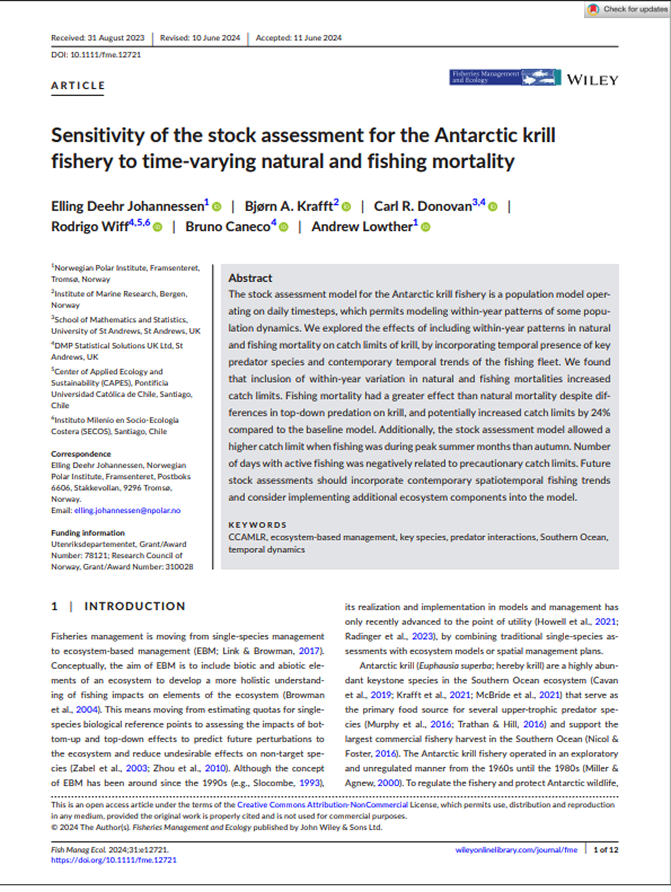Antarctic ecosystem
Fisheries management
Biomass
Krill (Euphausia superba)
Is current management of the Antarctic krill fishery in the Atlantic sector of the Southern Ocean precautionary?
Summary
This study examines whether current Antarctic krill fishing management in the Atlantic sector of the Southern Ocean is precautionary - meaning it protects the krill population from overfishing. The analysis shows that current management is working well at the regional scale.The effective catch limit (trigger level) of 0.62 million tonnes per year represents an exploitation rate of less than 7% of estimated krill biomass - below the 9.3% level considered sustainable for maintaining healthy krill stocks and supporting dependent predators.Subarea catch limits help prevent excessive concentration of fishing in any one area. The research concludes that while current management is precautionary regionally, more detailed monitoring and management at smaller scales will be important for protecting this crucial Antarctic ecosystem.
Key Findings
1
Trigger level catch limit (0.62 million tonnes) represents ~1% of the 2000 biomass estimate 2
Exploitation rates in each subarea remain below 3% due to actual catches being less than 50% of the trigger level 3
No evidence for krill decline in recent decades, despite some decline in the 1980s 4
Current management appears precautionary at the regional scale, but finer-scale management may be needed for sensitive areas and climate change impacts 

